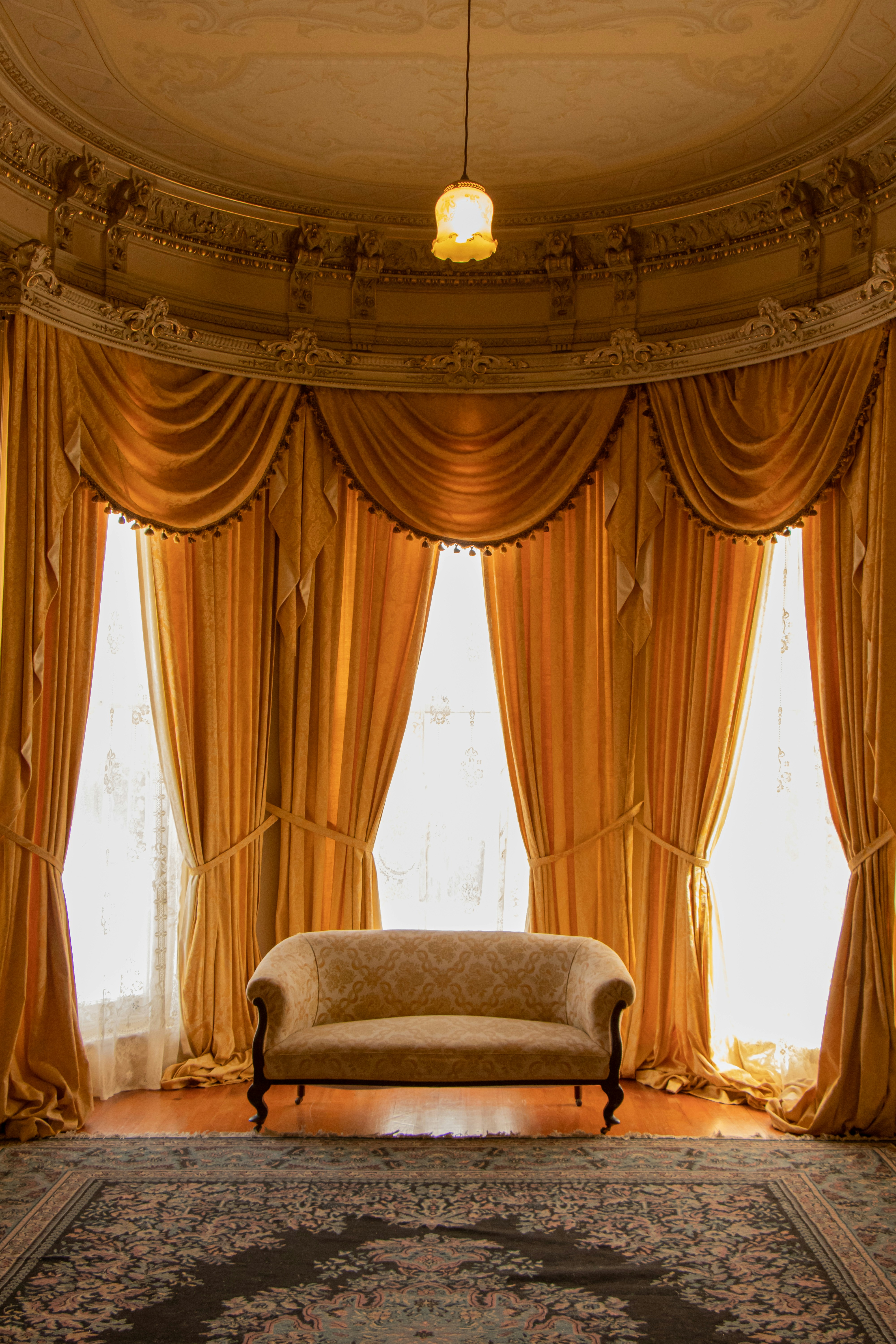SAVE YOUR CART
We noticed you have not Logged In or Signed Up. Leaving tulio.design will result in your history and cart getting lost.


Choose the language you’d like to browse the site in
Choose a country or region. This affects the currency you’re billed in, availability of items, price and delivery options.
 Afghanistan
Afghanistan
USD $
 Albania
Albania
USD $
 Algeria
Algeria
USD $
 Andorra
Andorra
EUR €
 Angola
Angola
USD $
 Argentina
Argentina
USD $
 Armenia
Armenia
USD $
 Australia
Australia
USD $
 Austria
Austria
EUR €
 Azerbaijan
Azerbaijan
USD $
 Bahamas
Bahamas
USD $
 Bahrain
Bahrain
USD $
 Bangladesh
Bangladesh
USD $
 Barbados
Barbados
USD $
 Belarus
Belarus
USD $
 Belgium
Belgium
EUR €
 Belize
Belize
USD $
 Benin
Benin
USD $
 Bhutan
Bhutan
USD $
 Bolivia
Bolivia
USD $
 Bosnia and Herzegovina
Bosnia and Herzegovina
USD $
 Botswana
Botswana
USD $
 Brazil
Brazil
USD $
 Brunei
Brunei
USD $
 Bulgaria
Bulgaria
USD $
 Burkina Faso
Burkina Faso
USD $
 Burundi
Burundi
USD $
 Cabo Verde
Cabo Verde
USD $
 Cambodia
Cambodia
USD $
 Cameroon
Cameroon
USD $
 Canada
Canada
USD $
 Central African Republic
Central African Republic
USD $
 Chad
Chad
USD $
 Chile
Chile
USD $
 China
China
USD $
 Colombia
Colombia
USD $
 Comoros
Comoros
USD $
 Congo (Congo-Brazzaville)
Congo (Congo-Brazzaville)
USD $
 Costa Rica
Costa Rica
USD $
 Croatia
Croatia
USD $
 Cuba
Cuba
USD $
 Cyprus
Cyprus
EUR €
 Czechia (Czech Republic)
Czechia (Czech Republic)
USD $
 Democratic Republic of the Congo
Democratic Republic of the Congo
USD $
 Denmark
Denmark
USD $
 Djibouti
Djibouti
USD $
 Dominica
Dominica
USD $
 Dominican Republic
Dominican Republic
USD $
 Ecuador
Ecuador
USD $
 Egypt
Egypt
USD $
 El Salvador
El Salvador
USD $
 Equatorial Guinea
Equatorial Guinea
USD $
 Eritrea
Eritrea
USD $
 Estonia
Estonia
EUR €
 Eswatini
Eswatini
USD $
 Ethiopia
Ethiopia
USD $
 Fiji
Fiji
USD $
 Finland
Finland
EUR €
 France
France
EUR €
 Gabon
Gabon
USD $
 Gambia
Gambia
USD $
 Georgia
Georgia
USD $
 Germany
Germany
EUR €
 Ghana
Ghana
USD $
 Greece
Greece
EUR €
 Grenada
Grenada
USD $
 Guatemala
Guatemala
USD $
 Guinea
Guinea
USD $
 Guinea-Bissau
Guinea-Bissau
USD $
 Guyana
Guyana
USD $
 Haiti
Haiti
USD $
 Honduras
Honduras
USD $
 Hungary
Hungary
USD $
 Iceland
Iceland
USD $
 India
India
INR ₹
 Indonesia
Indonesia
USD $
 Iran
Iran
USD $
 Iraq
Iraq
USD $
 Ireland
Ireland
EUR €
 Israel
Israel
USD $
 Italy
Italy
EUR €
 Jamaica
Jamaica
USD $
 Japan
Japan
JPY ¥
 Jordan
Jordan
USD $
 Kazakhstan
Kazakhstan
USD $
 Kenya
Kenya
USD $
 Kiribati
Kiribati
USD $
 Kuwait
Kuwait
USD $
 Kyrgyzstan
Kyrgyzstan
USD $
 Laos
Laos
USD $
 Latvia
Latvia
EUR €
 Lebanon
Lebanon
USD $
 Lesotho
Lesotho
USD $
 Liberia
Liberia
USD $
 Libya
Libya
USD $
 Liechtenstein
Liechtenstein
USD $
 Lithuania
Lithuania
EUR €
 Luxembourg
Luxembourg
EUR €
 Madagascar
Madagascar
USD $
 Malawi
Malawi
USD $
 Malaysia
Malaysia
USD $
 Maldives
Maldives
USD $
 Mali
Mali
USD $
 Malta
Malta
EUR €
 Marshall Islands
Marshall Islands
USD $
 Mauritania
Mauritania
USD $
 Mauritius
Mauritius
USD $
 Mexico
Mexico
USD $
 Micronesia
Micronesia
USD $
 Moldova
Moldova
USD $
 Monaco
Monaco
EUR €
 Mongolia
Mongolia
USD $
 Montenegro
Montenegro
EUR €
 Morocco
Morocco
USD $
 Mozambique
Mozambique
USD $
 Myanmar (Burma)
Myanmar (Burma)
USD $
 Namibia
Namibia
USD $
 Nauru
Nauru
USD $
 Nepal
Nepal
USD $
 Netherlands
Netherlands
EUR €
 New Zealand
New Zealand
USD $
 Nicaragua
Nicaragua
USD $
 Niger
Niger
USD $
 Nigeria
Nigeria
USD $
 North Korea
North Korea
USD $
 North Macedonia
North Macedonia
USD $
 Norway
Norway
USD $
 Oman
Oman
USD $
 Pakistan
Pakistan
USD $
 Palau
Palau
USD $
 Palestine
Palestine
USD $
 Panama
Panama
USD $
 Papua New Guinea
Papua New Guinea
USD $
 Paraguay
Paraguay
USD $
 Peru
Peru
USD $
 Philippines
Philippines
USD $
 Poland
Poland
USD $
 Portugal
Portugal
EUR €
 Qatar
Qatar
USD $
 Romania
Romania
USD $
 Russia
Russia
USD $
 Rwanda
Rwanda
USD $
 Saint Kitts and Nevis
Saint Kitts and Nevis
USD $
 Saint Lucia
Saint Lucia
USD $
 Saint Vincent and the Grenadines
Saint Vincent and the Grenadines
USD $
 Samoa
Samoa
USD $
 San Marino
San Marino
EUR €
 Sao Tome and Principe
Sao Tome and Principe
USD $
 Saudi Arabia
Saudi Arabia
SAR ر.س
 Senegal
Senegal
USD $
 Serbia
Serbia
USD $
 Seychelles
Seychelles
USD $
 Sierra Leone
Sierra Leone
USD $
 Singapore
Singapore
USD $
 Slovakia
Slovakia
EUR €
 Slovenia
Slovenia
EUR €
 Solomon Islands
Solomon Islands
USD $
 Somalia
Somalia
USD $
 South Africa
South Africa
USD $
 South Korea
South Korea
USD $
 South Sudan
South Sudan
USD $
 Spain
Spain
EUR €
 Sri Lanka
Sri Lanka
USD $
 Sudan
Sudan
USD $
 Suriname
Suriname
USD $
 Sweden
Sweden
USD $
 Switzerland
Switzerland
USD $
 Syria
Syria
USD $
 Taiwan
Taiwan
USD $
 Tajikistan
Tajikistan
USD $
 Tanzania
Tanzania
USD $
 Thailand
Thailand
USD $
 Timor-Leste
Timor-Leste
USD $
 Togo
Togo
USD $
 Tonga
Tonga
USD $
 Trinidad and Tobago
Trinidad and Tobago
USD $
 Tunisia
Tunisia
USD $
 Turkey
Turkey
USD $
 Turkmenistan
Turkmenistan
USD $
 Tuvalu
Tuvalu
USD $
 Uganda
Uganda
USD $
 Ukraine
Ukraine
USD $
 United Arab Emirates
United Arab Emirates
AED د.إ
 United Kingdom
United Kingdom
GBP £
 United States
United States
USD $
 Uruguay
Uruguay
USD $
 Uzbekistan
Uzbekistan
USD $
 Vanuatu
Vanuatu
USD $
 Vatican City
Vatican City
EUR €
 Venezuela
Venezuela
USD $
 Vietnam
Vietnam
USD $
 Yemen
Yemen
USD $
 Zambia
Zambia
USD $
 Zimbabwe
Zimbabwe
USD $
Please Login First
COOKIES & PRIVACY
This website uses cookies to ensure you get the best experience on our website. Please read our Cookie Policy and Privacy Policy.
Tulio uses cookies, including third-party cookies, for functional reasons, for statistical analysis, to personalise your experience, offer you content that targets your particular interests and analyse the performance of our advertising campaigns.
These cookies are necessary for the web boutique to function and cannot be turned off. They are set to help improve your experience and offer you key functions on the website. These cookies do not store any personally identifiable information or track your browsing habits.
These cookies are used to enhance the functionality and personalisation of the web boutique as they collect information on your interests as your browse the website. They help us assist you as best possible and to recommend the products that best meet your expectations and preferences.
We noticed you have not Logged In or Signed Up. Leaving tulio.design will result in your history and cart getting lost.

Decorating historic hotels interior design in an authentically period-correct style provides a unique design challenge. The right curtains and window treatments are an essential part of creating an ambiance that transports guests back in time. From Renaissance castles to Victorian inns, the windows of historic lodgings have framed views for centuries. But the curtains themselves have evolved dramatically across the ages.
The earliest window coverings in medieval castles served the simple yet crucial functions of providing privacy, insulation, and protection from the elements. As fashions and fabrics became more elaborate, curtains took on more decorative roles in wealthy homes. The Victorian era saw curtains develop into a high art form, with sumptuous folds of velvet and brocade framing windows. Modern historic hotels aim to evoke these earlier eras in the finest detail, including period-appropriate historic hotel curtains.
The quest for the perfect historical window treatments calls for thoughtful research and design. Curators and designers must balance historical accuracy with modern guest amenities. To meet building codes while maintaining period style, solutions like layered curtains or removable blackout linings are often devised. With exacting custom work, new curtains can be crafted to gracefully dress windows of all shapes and sizes. When done right, they become integral to preserving the ambiance of grandeur and comfort these historic lodgings are known for. As the crowning touch to the rooms, curtain design deserves special attention.
The history of curtains spans centuries and cultures, evolving along with architectural styles and vintage decor trends. Curtains originated as a practical solution to bring privacy, insulation, and decoration to windows.
In ancient history, curtains were simple fabrics like linen, wool, or silk that hung across openings. Early Egyptian murals depict basic curtains draped over doorways and windows. Ancient Greek and Roman houses often had two types of curtains: the velum was a heavier curtain that could be drawn across the window for privacy and shading, while the diaphanous silk drapes known as tetravela added a sheer layer for decoration.
In medieval Europe, curtains became more prominent as homes had larger windows. Fabric choices expanded beyond linen to include velvets, damasks, and other luxe materials. Tapestries also emerged as a curtain alternative that provided insulation. Renaissance and Baroque eras saw ornate, floor-length curtains with heavy fabrics, fringe, tassels, and elaborate trim. These opulent curtains broadcasted the owner's wealth and status.
Victorian era curtains were equally lavish. This period favored full, billowing curtains in dark, rich hues like wine, emerald, and sapphire. Plush velvets and brocades were popular as were heavy trims, fringes, and elegant drapery. Colonial American styles preferred simpler, more utilitarian curtains. Plain, light-filtering fabrics in solids or small prints were common.
Throughout the 20th century, curtain styles diversified along with home design. Periods like Art Deco and Mid-Century Modern had signature looks like geometric prints. Today, historic hotels can choose curtain styles that align with the architecture and era of their specific property. Curtains remain an impactful design detail for enhancing historical ambiance.
Color trends and poplar palettes have dramatically shifted through various eras of history. Incorporating historically-accurate colors into curtains and other fabric treatments can transport guests back in time.
During medieval times, clothing and textiles favored bright, vivid hues. Reds, blues, greens, and yellows were prevalent, as natural dyes tended to create bold colors. A deep crimson red was particularly popular. Curtains made with rich velvets and brocades in jewel tones evoke the opulent ambiance of medieval castles and palaces.
The Renaissance brought an explosion of color to Europe. Deep blues, emerald greens, brilliant yellows and lavish purples came into vogue, often with metallic accents. Curtains from the Renaissance might incorporate damasks, brocades and heavy textures in these saturated, regal colors.
Soft, muted tones became popular during the Victorian era. Flowing draperies in cream, gray, mauve, dusty blue and pink imbue a room with Victorian delicacy. Lace, frills, tassels and other ornate embellishments were also widely used.
At the turn of the century, vibrant hues returned to prominence. Deep hunter greens, rich burgundies, and sapphire blues evoke the striking interiors of the early 1900s. Geometric Art Deco patterns in bold contrasting colors also emerged during this era.
Modern designers can take inspiration from the color stories of bygone eras when creating period-appropriate curtains for historic hotels. Consult archives and records to determine the original color schemes. Creative touches like contrasting bands, trim and fringe can provide visual interest while staying true to history.
One of the key challenges when designing historic hotel curtains is balancing a period-correct aesthetic with the modern conveniences and comforts today's travelers expect. Many older properties were simply not designed with things like soundproofing, light control, or insulation in mind. As a result, guests may experience noise disturbances, light intrusion, or comfort issues that hoteliers must address.
Curtains can play an important role in unobtrusively incorporating solutions to these problems. Blackout curtain linings or interlinings help block light for a better night's sleep. Adding insulation and soundproofing layers within curtain panels can aid with temperature regulation and noise reduction. Careful material choices can improve acoustics and increase privacy.
The key is implementing these modern enhancements in ways that do not detract from the historic aesthetics and ambiance. For example, a soundproof blackout curtain can still have an exterior layer featuring period-appropriate fabrics, colors, and designs consistent with the era. With custom-made curtains, accommodations for insulation or linings can be seamlessly integrated while maintaining a historically accurate look.
Working closely with designers and consultants familiar with both historic preservation and modern hotel amenities is recommended when balancing these competing needs. The goal should be enhancing comfort and functionality for today's patrons while still providing an authentic sense of the past. With careful planning, historic hotels can achieve both.
One of the biggest challenges with designing window treatments for historic hotels is that the window shapes and sizes often don't conform to modern standards. Historic buildings frequently have uniquely shaped windows - curved, arched, oval, pointed arch, and more. This makes it difficult to find ready-made curtains that will properly fit the windows.
Measuring these uniquely shaped windows and determining the right dimensions and angles for curtains to hang properly can be tricky. Off-the-shelf curtains simply won't provide a tailored fit. Having curtains made specifically for each unique window is crucial for both aesthetic and functional reasons.
Custom-made curtains allow the fabric to be cut and shaped precisely to each window for a perfect fit. This provides a smooth, elegant look as the curtains gracefully follow the contours of the windows. Billowing or gaping curtains would detract from the historic appearance.
Custom curtains also allow optimal light control. With odd shaped windows, there are often uneven gaps around generic curtains, letting in unwanted light. Properly fitted custom curtains solve this issue.
For installation, the customized headings, rod pockets, pleats and other details ensure the curtains hang perfectly within each window frame. Getting a polished, finished look would be impossible with ill-fitting ready-made curtains.
Working with a professional designer and curtain maker to provide measurements, photos, and window details is recommended to get the custom sizing and details right. Though more expensive than off-the-shelf, custom curtains are an important element in maintaining the authentic historic ambiance. The results are well worth the investment for a period-correct look.
Choosing the right fabrics and materials is crucial for period-correct curtains in historic hotels. Some key considerations include:
Common historic fabrics like linen, cotton, wool and silk were commonly used for curtains in different eras. Linen and cotton provide a casual, breezy look perfect for coastal or summer homes. Wool is ideal for insulation and blocking drafts in colder climates. Silk adds sophistication for more formal spaces like ballrooms. Each material has distinct draping capabilities to consider.
Natural vs synthetic materials is another choice.
Natural fabrics like cotton and linen breathe better, last longer and capture the historic aesthetic. But synthetic materials like polyester are typically more affordable, durable and easier to clean. A blend can balance the benefits of each.
Fabrics that drape well vs block light is another consideration.
Lighter fabrics like silk and linen drape beautifully but may not adequately darken a room. Heavier opaque fabrics like damask, velvet or layered curtains can completely block out light for rooms that need total darkness.
Durability and cleaning are also factors in public spaces.
Some natural fabrics like silk are delicate and require dry cleaning. Cotton, linen and synthetic blends tend to be machine washable and can withstand repeated cleaning. Moth-proofing may be needed for wool curtains.
Making the optimal fabric choice depends on the location, room use, budget and overall design vision. But consulting interior design experts familiar with historic aesthetics can ensure your curtains perfectly match the vintage style.
When selecting curtains for a historic hotel, it's important to consider styles that are appropriate for the period and architecture. Some classic options to explore:
Swags, jabots, and cascades are elegant gathered and draped fabrics that can elegantly frame windows. Swags feature a fabric that is gathered in the center and drapes in a curved shape, while jabots are fabric ruffles or tails. Cascades are a series of graduated swags that gracefullycascade" from the top of the window to the floor. These styles were popular in the 18th and 19th centuries, and add a refined historic flourish.
Sheer curtains made from light, gauzy fabrics allow light to filter into a room while still providing privacy and softness at the windows. Historically, sheers would have been made from fabrics like lace, muslin, or silk. They create an elegant, delicate look well-suited to historic décor.
In addition to swags and sheers, consider other classic window treatments like drapes, curtains, shades and blinds. Drapes are full-length curtains that puddle on the floor, while curtains are valanced or unfashioned treatments stopping near the window sill. Roller shades and wood or faux-wood blinds are also period-appropriate options.
Don't forget decorative accents like valances, tie backs, tassels and trim. Valances are a decorative fabric treatment across the top of a window. Tie backs secure curtains to the side, while tassels and trim add ornamental interest. These touches can elevate the look.
When decorating a historic hotel, look to time-honored styles that reflect the architecture and era for an authentically elegant look. Careful thought in choosing curtains that harmonize with the history of the hotel can transport guests back in time.
Choosing the right curtains for a historic hotel requires expertise in period design. Working with experienced preservation consultants and interior designers can ensure the window treatments properly balance historic accuracy and modern guest needs.
Preservation consultants specialize in maintaining the historic integrity of older structures. They can advise on which curtain styles, colors, and fabrics would have been used in the hotel's original era. Their guidance helps ensure the curtains align with the time period and do not damage the ambiance.
Not all designers have preservation credentials. When seeking consultants and designers, look for demonstrated experience with historic buildings, museum curation, or heritage site management. Review their project portfolios for sensitive restorations of other historic spaces. Their expertise should enhance historic character, not overwhelm it.
Historic hotels around the world have implemented period-accurate curtain designs to great success. Here are some prime examples showcasing the power of custom curtains to transform guest rooms into immersive historic experiences:

Claridge's partnered with renowned English textile house GP & J Baker to adorn its rooms in historically-inspired chintz. Bold Victorian-style floral patterns in deep greens and crimsons envelope the windows in rich fabric. Contrast trims and swag headers finish the dramatic look. The team painstakingly matched archival samples to recreate the heritage styles with a modern twist.

Subtle blue and gold embroidered taffeta curtains were installed in The Hay-Adams' elegant accommodations to reflect the 1920s heritage of the hotel. Metallic sheen in the fabric and simple gathered headers capture the glamour of the Jazz Age. The light blues pair serenely with the Federal-style decor.

The right curtains can bring historic character to life. As demonstrated through these stunning case studies, period-accurate designs create unforgettable ambiance.
Curtain design and selection brings unique challenges and opportunities in historic hotels. As we've seen, the history of interior design and architecture leaves a rich legacy of styles to consider when selecting period-appropriate curtains. Beyond aesthetics, thoughtful choices in color, fabric, and style can help transport guests back in time.
Yet balancing historic ambiance with modern guest comforts remains an artful endeavor. Well-designed historic hotel curtains curtains can filter light for restful sleep and buffer sound in older buildings, while still evoking past eras. By working closely with designers and consultants, hoteliers can strike that delicate balance between past and present. Custom-made curtains build on historic character while accommodating the distinct window shapes of these iconic structures.
Ultimately, curtain design plays a special role in preserving the ambiance and heritage of historic hotels. Thoughtful choices unite preservation with contemporary hospitality. When past and present harmonize through considerate design, guests enjoy an unforgettable peek into bygone eras while still relaxing in comfort. By honoring the past while meeting today's standards, historic hotels retain their allure, transporting patrons across the decades with each new stay.
